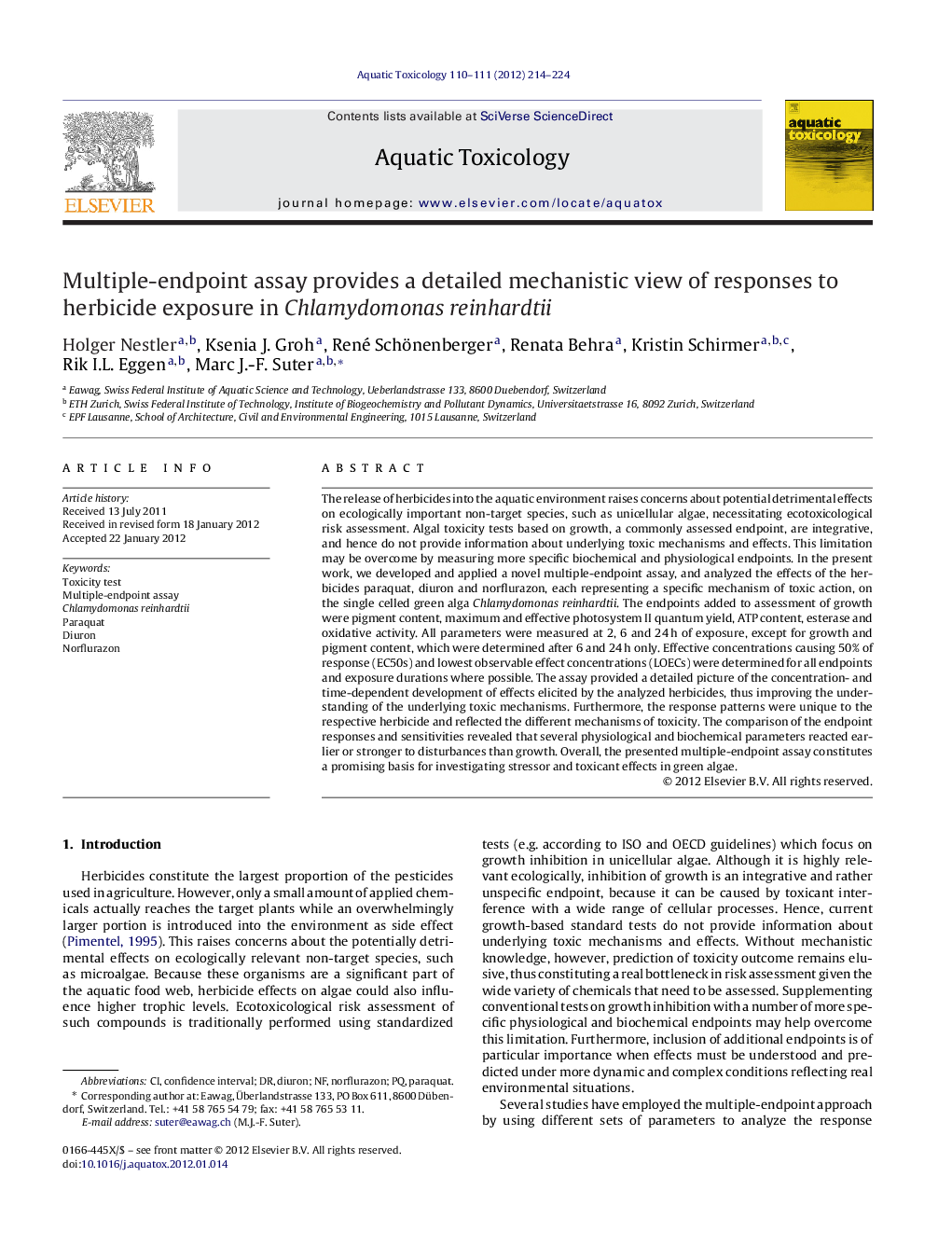| Article ID | Journal | Published Year | Pages | File Type |
|---|---|---|---|---|
| 4529772 | Aquatic Toxicology | 2012 | 11 Pages |
The release of herbicides into the aquatic environment raises concerns about potential detrimental effects on ecologically important non-target species, such as unicellular algae, necessitating ecotoxicological risk assessment. Algal toxicity tests based on growth, a commonly assessed endpoint, are integrative, and hence do not provide information about underlying toxic mechanisms and effects. This limitation may be overcome by measuring more specific biochemical and physiological endpoints. In the present work, we developed and applied a novel multiple-endpoint assay, and analyzed the effects of the herbicides paraquat, diuron and norflurazon, each representing a specific mechanism of toxic action, on the single celled green alga Chlamydomonas reinhardtii. The endpoints added to assessment of growth were pigment content, maximum and effective photosystem II quantum yield, ATP content, esterase and oxidative activity. All parameters were measured at 2, 6 and 24 h of exposure, except for growth and pigment content, which were determined after 6 and 24 h only. Effective concentrations causing 50% of response (EC50s) and lowest observable effect concentrations (LOECs) were determined for all endpoints and exposure durations where possible. The assay provided a detailed picture of the concentration- and time-dependent development of effects elicited by the analyzed herbicides, thus improving the understanding of the underlying toxic mechanisms. Furthermore, the response patterns were unique to the respective herbicide and reflected the different mechanisms of toxicity. The comparison of the endpoint responses and sensitivities revealed that several physiological and biochemical parameters reacted earlier or stronger to disturbances than growth. Overall, the presented multiple-endpoint assay constitutes a promising basis for investigating stressor and toxicant effects in green algae.
► We developed a novel multiple-endpoint assay. ► We analyzed concentration- and time-dependent effects of herbicides on C. reinhardtii. ► We used the model herbicides paraquat, diuron and norflurazon. ► Response patterns were unique for each herbicide, reflecting the different toxic mechanisms. ► Several parameters reacted earlier or stronger to disturbances than growth.
